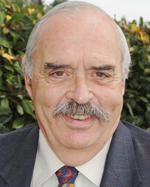Municipalities have been managing assets for decades.
Asset Management is quantifying in time and money the risk and consequences of our decisions as local governments look ahead. Without this step, and improving our forward-thinking and planning process, our ability to provide reliable services for our communities will continue to deteriorate as costs rise and assets fail.
The "scare" in asset management is the perception of imposing a new file with a long learning curve and a lot of work on already busy local government staff.
The Public Sector Accounting Board introduced several years ago an accounting standard called PSAB 3150, Tangible Capital Assets. Local government annual financial statements from 2010 onward include valuation of tangible capital assets. This is the first-time asset values and depreciation were reported for local governments. The accounting standard is based on historical costs and is a point-in-time analysis (though updated annually).
Asset management is a process, not just a plan:
To define the broader range of activities that constitute the asset management process, British Columbia, through Asset Management BC, developed ‘Asset Management for Sustainable Service Delivery: A BC Framework’. The framework defines all the components of the process and is the core document that funding agencies, the Province and UBCM require our communities to follow.
In BC, we do not talk about the asset management plan in isolation from the entire process. All components of the process are needed in order to provide and deliver a successful program. As a start, there is a need to ensure development of an organization-wide understanding and commitment to service delivery and the steps required to develop an asset management implementation strategy. Of importance, people must be recognized as a core asset.
Graphic representation of the framework' is shown in figure 1. The circular design is a reflection that the process is on-going as long as a community exists and has assets. The processes require periodic monitoring, and the components need regular annual updating. The annual budget ultimately must be fully linked with the annual asset management strategy update.
The framework' has two levels of explanatory text. There is a public version, written without technical and financial terms, intended for councillors and the public. The longer version provides guidance for the asset management practitioners. Both are available for download from Asset Management BC at www.assetmanagementbc.ca The framework is currently being updated to include climate change, land use planning, natural capital assets and operations and maintenance.
Why Asset Management BC was created
A decade ago a federal Working Group on Asset Management concluded that regional groups were needed to implement asset management. Asset Management BC (AM BC) was created to be a resource for our communities. The primary mandate is ‘knowledge transfer and information sharing’.
AM BC is a Community of Practice'. Workshops and knowledge-sharing is common. To define and support activities, a working group' was formed with reps from:
- Local governments in BC
- Professional and political Associations representing skill sets within our communities
- The province
- Federal Indigenous Affairs
- First Nations.
Over the past several years, AM BC has published 22 issues of our newsletter; organized training—especially NAMS training workshops for municipal staff; and hosts an annual conference. We are proud to say our newsletter is considered one of the premiere newsletters for asset management in Canada. Most contain case studies from municipalities plus many very informative articles, tips and tactics. The newsletter is now distributed in 5 countries.
To provide long term sustainability to AM BC, this year a formal partnership agreement was executed representing core groups critical to driving integrated asset management'. The partnership includes:
- Union of British Columbia Municipalities (Municipal Councillors and senior staff)
- Ministry of Municipal Affairs and Housing (Provincial government)
- Long Government Management Association (Chief Administrative Officers and senior staff)
- Government Finance Officers Association of BC (Financial personnel)
- Municipal Insurance Association of BC (Insurers and risk managers)
- Planning Institute of BC (long range and development planners)
- BC Water and Waste Association (Water and sewer system managers and operators)
- Public Works Association of BC (Public Works operations and maintenance personnel)
- CivicInfo (Information and communications)
Effective Asset Management
Implementation of asset management is not all about money. The long term financial plan is a very necessary document within the process, but it is not the only solution. There are other complementary solutions, such as:
- improving maintenance to make an asset last longer
- use of new technologies in asset renewal
- having a critical look at the role of an asset.
It is becoming clear that communities are struggling to deliver capital improvements due to staff shortages, workload and/or inadequate skill sets.
An analysis of staff resources and expertise needs to be completed as part of the asset management strategy. A program for staffing and training should be developed in parallel with asset management implementation.
Finally, communicating the results is everything. The Council document needs to be inclusive but short. The City of Selkirk, Manitoba and the District of North Vancouver, British Columbia, prepare annual "Asset Strategy" documents for Council. These are usually no more than 20 pages that summarize and make specific recommendations for Council.
Both these documents are on the AM BC website.
The plan and the strategy are not the same. Attention to the communications plan and delivery will greatly assist understanding the process and the needs. Annual updates are needed.
To summarize, the key points for better asset management include:
- AM is not new and must be integrated into daily activities. There is catch-up to do. AM is part of everyday tasks in our community.
- Asset management is a continuous, on-going process. It is about sustainable service.
- Alternative and complementary implementation strategies need to be identified—both short and long term
- Include a resource capacity analysis and program both in skill sets and the numbers of staff in your asset management program so you have the ability to deliver the results.
- Our biggest challenge is communicating effectively to Council and the taxpayer. There's an important difference between an asset management plan and an asset management strategy. The "Strategy" report, not the AM Plan, is the annual Council document along with the annual budget.
- Attention and linkage must be given in the annual operating budget to the principles and drivers of sound asset management. Assets last longer when properly maintained. Don't cut the maintenance budget. Capital and renewal projects must relate to service requirements for the community and be strategic in choice.








